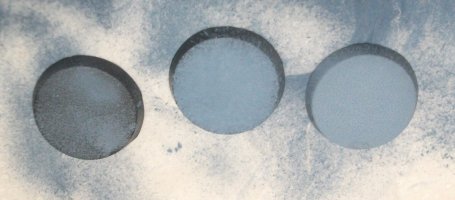ManicMan
Lord
Well, as stated before some months back, I got pretty pissed off with Vallejo in that there Grey-Blue (70.943) comes in normal acrylic version and in airbrush version, but the Airbrush version (with the same code and everything, so it is 100% meant to be the same colour) is a HUGHLY different and much darker shade, so My idea of quick painting Space Wolves via airbrushing for the armour took a huge step back. the fact that really, an airbrush version of a paint is just the same thing but only 50% of the paint content and the rest is thinner, but it's the same price.. is a bit weird.. but anyway.. best I can hope is to really take some of the normal paint version and thin it for my airbrush.
I can see two good cheap options.. well, you can by special 'thinner' but... alot of the time that seams like a bit of a waste of money as you are buying something which you might already have but with a mark up. anyway, the two options appear to be
1) Water at a ratio of 1:1
2) Rubbing Alcohol (isopropyl?)
well.. while not 100% free unless you collect rain water, water is probably the cheapest option. however, I do have a big bottle of Isopropyl (9something% so pretty pure). Now.. Isopropyl is what I used to clean my airbrush.. so.. that will very much thin the paint out.. I'm kinda not sure what is 'best'.
So I decided I had two options: 1) suck it and see 2) ask others.
I decided to try option 2 first cause I'm lazy at times.
I can see two good cheap options.. well, you can by special 'thinner' but... alot of the time that seams like a bit of a waste of money as you are buying something which you might already have but with a mark up. anyway, the two options appear to be
1) Water at a ratio of 1:1
2) Rubbing Alcohol (isopropyl?)
well.. while not 100% free unless you collect rain water, water is probably the cheapest option. however, I do have a big bottle of Isopropyl (9something% so pretty pure). Now.. Isopropyl is what I used to clean my airbrush.. so.. that will very much thin the paint out.. I'm kinda not sure what is 'best'.
So I decided I had two options: 1) suck it and see 2) ask others.
I decided to try option 2 first cause I'm lazy at times.


